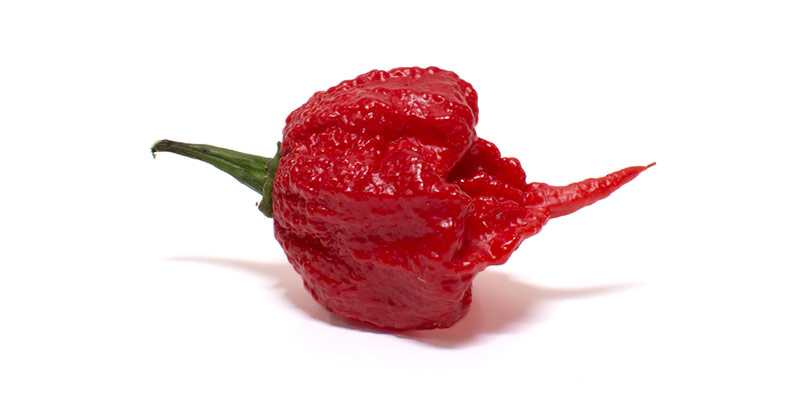
- CAROLINA REAPER PEPPER SALSA HOW TO
- CAROLINA REAPER PEPPER SALSA SKIN
- CAROLINA REAPER PEPPER SALSA FULL
I recommend the plastic, school cafeteria gloves for food handling because they slide out easily and won’t splatter trying to take them off. A cooking space with ventilation, preferably an open window! The Reaper fumes are real, so be very careful not to come in contact with them.
CAROLINA REAPER PEPPER SALSA HOW TO
Now that you are familiar with how to measure their level of heat, let’s go ahead and make the hottest hot sauce there is: the Carolina Reaper sauce. Do not expect a “sugary” type of sweetness, but a bold detour from the pure heat that may soften the blow for a fragment of a second, allowing you to appreciate the taste of the pepper in its normal form. The sauce also shows a trace of sweetness that is typical of all kinds of peppers. Unless it has been laced with extra flavors to enhance it or make it more marketable, just wait for a thicker, red, spicy all-around sauce. Expect your typical Reaper sauce to be a bright red color with seeds showing. It has a clean finish and a lingering burn. This type of sauce is for the true spice aficionado. The level of spice is quite high, and it can penetrate the skin. When reaping the peppers, be sure to have gloves on, as well as a good holding dish to keep the peppers contained and separated from other people in your kitchen.
CAROLINA REAPER PEPPER SALSA SKIN
It features bumpy skin texture and a peculiar “tail” that resembles that of a scorpion pepper, which is a close relative of it. The Carolina Reaper is bright red, stumpy, round, and small. However, there is no way to confuse these peppers.
CAROLINA REAPER PEPPER SALSA FULL
This pepper’s name is even registered and can only be used in full by the growers: The Smokin’ Ed’s Carolina Reaper®.Ĭompared to the jalapeno pepper, which is more universally known and consumed, the Carolina Reaper would be up to 850 times hotter. The record breaking title was official in 2012 and, to this day, no other hot pepper comes close in terms of Scoville Heat Units. Coming out at 2.2 million heat (Scoville) units, it became an easy contender for the title of hottest pepper on earth. The hybridization was tested in Winthrop University, and it bore the scientific name of HP22B. His goal was more serious than that, and it was done with every intention of breaking a world record. Grower Ed Currie, from South Carolina, did not just wake up one day with a child-like curiosity to cross-breed two chili peppers. As of 2011, it was considered the hottest pepper on the planet. The “naga viper” as it is also known, is notorious in popular culture among those who compete in tolerance competitions. The Reaper is a combination of the Red Habanero from the West Indies and the Pakistani Naga, or Naga Morish, which can also be found in India and Bangladesh. It is a hybrid, which means that it is a cross between two varietals. The Carolina Reaper chili pepper does not occur naturally. This sauce comes from the hottest peppers of the bunch as per the Guinness World Record in 2012, so it is certifiably going to burn your insides if you are not careful. It is known to reach over 2,200,000 Scoville Heat Units (SHU) -yes, 2.2 million of them- and it is produced as a hot sauce by the PuckerButt Pepper Company. The South Carolina native is a hybrid that surpassed the Moruga Scorpion as the world’s hottest chili pepper. Look no further than the Carolina Reaper sauce when searching for the hottest sauce on the planet. Meet the King of Heat: The Carolina Reaper

So, get ready to hear about the godfather of the Scoville rating: The Carolina Reaper sauce. The higher the SHU rating, the hotter the sauce. The measurement tool that determines the level of hotness or spiciness in a pepper is called the Scoville Heat Unit scale.

There may be add-ons that some cooks like to use, such as oil and laced vinegar, but these are secondary ingredients that should not take away the natural essence that the pepper brings to the table.

The ingredient that makes hot sauces different from one another is the type of pepper used for the sauce.

Dating back to the 8th century Mayans, hot sauce has been man’s spiciest companion for longer than any other sauce ever made. However, the history of man’s most feisty condiment, hot sauce, is quite different. Brown, white, tomato-based, and herbal sauces, have been around since the Middle Ages, when people figured out a way to infuse flavors in mixtures of olive oil and salt. In the world of grilling and cooking, there is nothing better than the perfect sauceto complement a meat or vegetable.


 0 kommentar(er)
0 kommentar(er)
